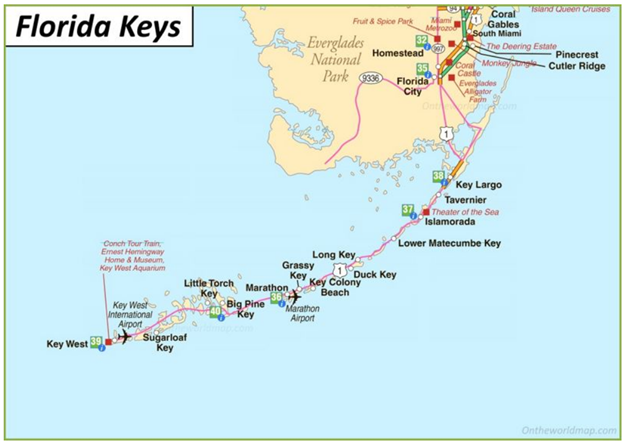The loveliest fleet of islands that lies anchored in any ocean.
– Mark Twain, on Hawaii
And forget not that the earth delights to feel your bare feet,
– Khalil Gibran, The Wanderer
and the winds long to play with your hair.”
Some people don’t like visiting the Florida Keys. It is hot here in the summer, which stretches from May through October and brings temperatures in the 90s and high humidity. They don’t like the traffic, which is limited to one road that connects the tropical islands from Florida City to Key West. Route 1 does get clogged on Friday and Sunday afternoons when weekend visitors come and go. Crossing the busy highway is nearly impossible at times. To go left, you might have to turn right and find a place to take a U-turn.
The route is lined with strip malls housing sandal-and-t-shirt shops, dive stores, and bait and tackle sellers. There are seafood grills, tiki bars, and mom-and-pop breakfast cafes. Hotels and motels are expensive, even when they look like something out of the 1970s painted over with aqua blue gloss and decorated with pale starfish. The exclusive resorts along the coast are hidden by dense acres of mangrove trees and long shell-paved driveways. These luxury enclaves are even more expensive, and their waterfront restaurants feature $50 lobster dinners complete with conch salad and key lime pie.
Yes, it’s expensive, sometimes crowded, and oddly run down for a vacation paradise. But there is much to love here, too. Some of those strip malls include art galleries where local artisans sell their driftwood sculptures and sunset watercolors. The dive shops offer half-day snorkeling tours of a local reef just six miles out, where the pink, yellow, and striped fish swarm around your feet and the coral fans wave beneath you. We have done this once, and we will do it again. (See Phil’s photos, below.) Next door, we can rent kayaks and go paddling through the cool mangrove creeks in search of manatees.
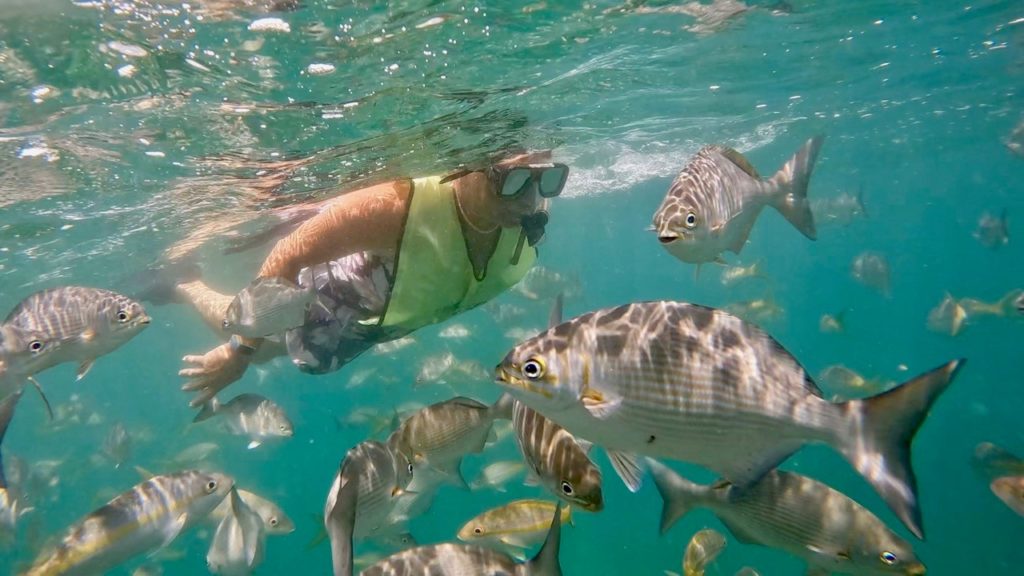

“Chickee” or Tiki bars are magical places where you might find the mayor of Marathon singing and playing his guitar. Local musicians can be heard in the waterfront tiki bars from early afternoon until closing time. It’s cool under the thatched palm fronds, a result of native Miccosukee (or Seminole) engineering. The steeply pitched roof draws heat upward and brings breezes in through the open walls. The drinks – what Jimmy Buffet calls tiki-pukey drinks – are made with fresh coconut, Florida orange juice, key limes, and island rum.
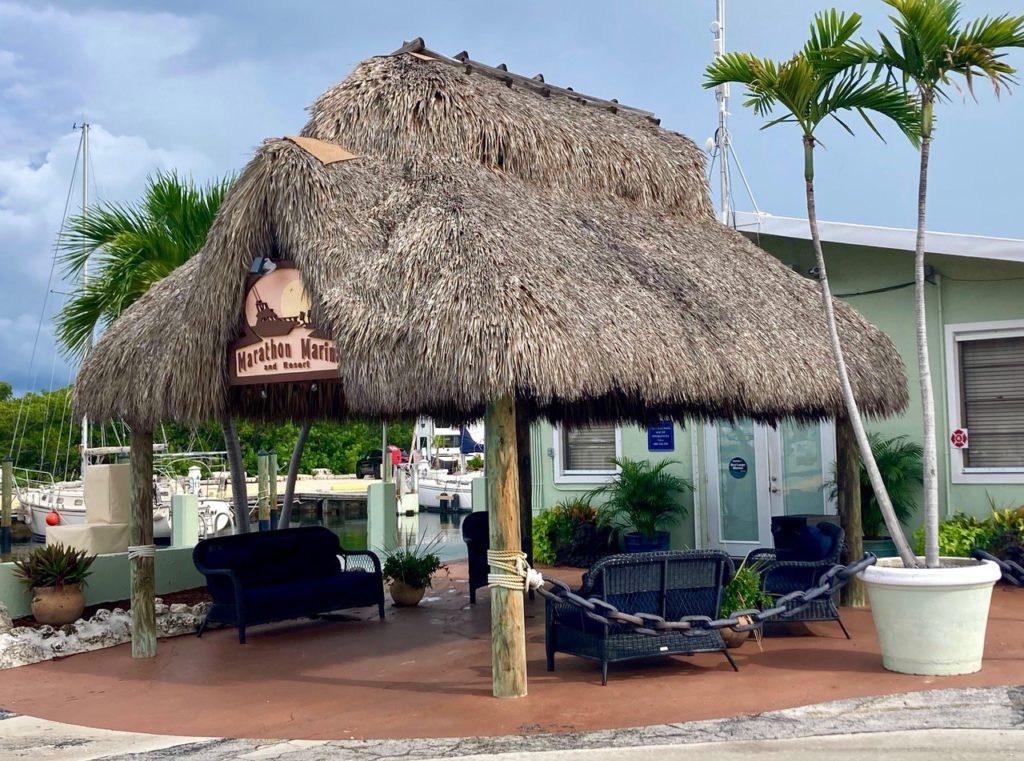
The food here is a problem for a vegetarian such as Phil. We can usually find veggie fare in Mexican restaurants and Italian or pizza places. The nearest Mexican place seems to be in Islamorada (a 20-mile drive). But for me, a seafood-eating pescatarian, options are plentiful. If the prices scare you, order appetizers. Last night I had a super delicious coconut shrimp appetizer at a fraction of the dinner cost. It was crunchy and light and came with a pina colada sauce that was dangerous to my blood sugar level. Other offerings at Porky’s BBQ and Marina were crab cakes, peel and eat shrimp, alligator bites, and of course, conch chowder. (They had a mediocre veggie burger for Phil.) Next time, we will arrive by dinghy and tie up at the restaurant’s dock.
We haven’t even started exploring all the entertainment venues here in Marathon. We went to see “Where the Crawdads Sing” at the local cinema, where patrons sit at tables and the concession stand sells beer, wine, award-winning popcorn, and nachos. It is only big enough for about 100 people, but shows first-run movies. They also have a community theater run by people who live in Boot Key Harbor. There is a turtle-rescue hospital just down the road that offers tours, and a dolphin encounter beyond that. (We encounter wild dolphins here in the harbor, so we might skip the captured dolphin show.)
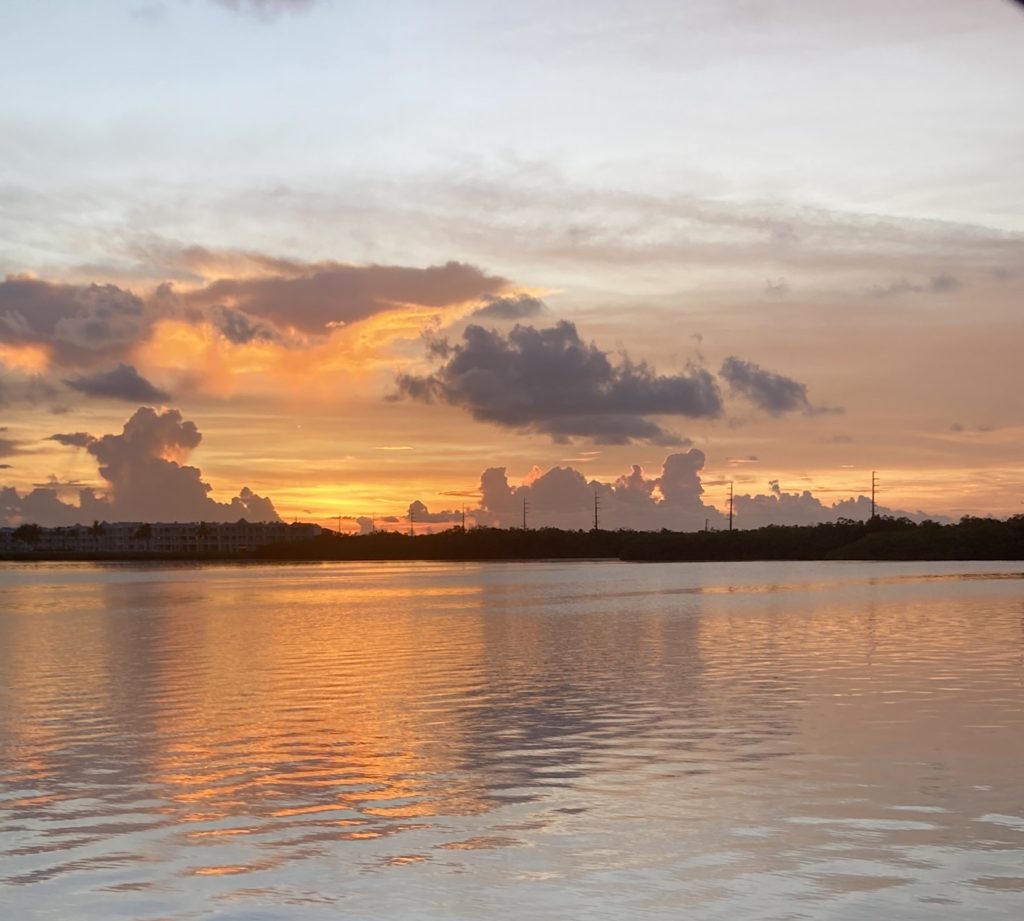

The natural wonders are the real draw for me. The sky is big here and the clouds are fascinating. Our boat’s cockpit faces the incredible sunsets and the frequent lightning storms. The bay to the west of Boot Key Harbor is very shallow, only 2 to 3 feet in most places, and features a rusting train engine that washed here from the 7-mile railroad bridge during a storm. (We call it “the little engine that couldn’t.”) It just sits there, hosting a party of birds until the tide comes in and hides all but a single spire. On that single spire, we will often see a lone anhinga bird drying its wings. This morning, we saw a great egret sitting there as two dolphins swam past.
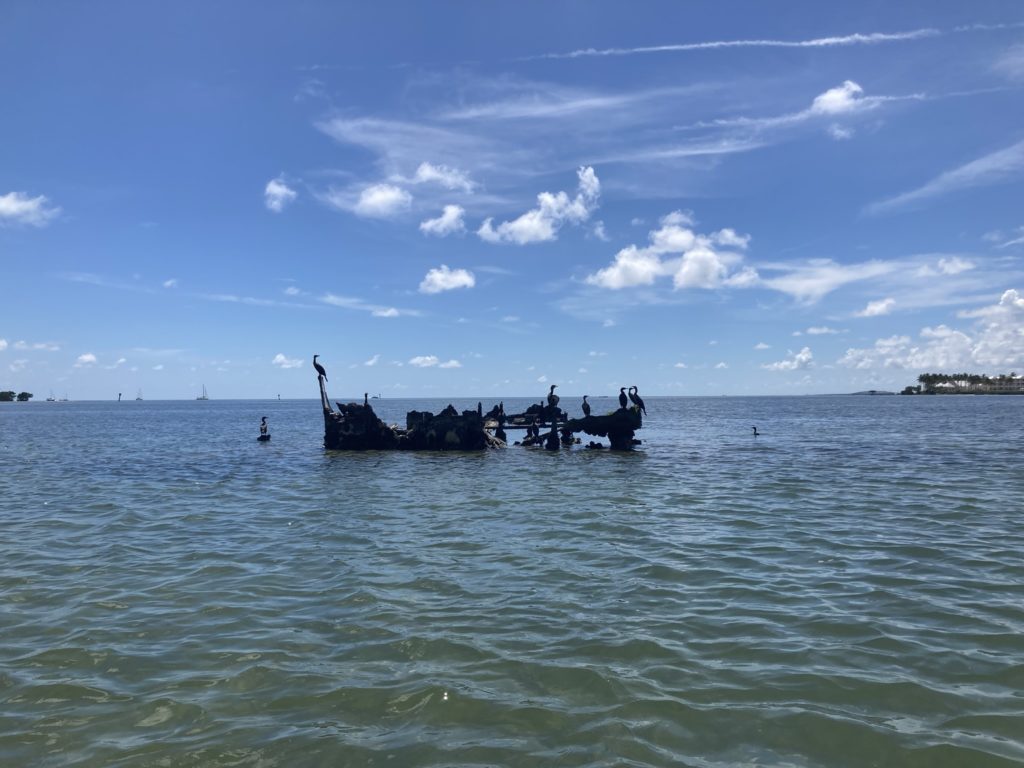
The road to Marathon goes through Key Largo, Islamorada, Lower Matecumbe, Long Key, Duck Key, and Grassy Key. Marathon, on Vaca Key, is a little more than halfway from Key Largo to Key West. All along the route there are expansive views of the shallow, light blue water on both sides of the road. State parks line Route 1 from John Pennekamp to Long Key, to Curry Hammock and Bahia Honda, with dense green mangroves protecting the narrow beachfront. When I was in college, I spent one spring break camping with two girlfriends along this stretch of wild tropical islands. I’m happy to say, it has not changed much in nearly 50 years.
In coming months, we will wander westward by car or sailboat down to the next keys and on to Key West. Along the way, we may fall in love with this place. Eventually, we will sail to other islands and leave the Florida Keys behind. For now, we are explorers – by dinghy, kayak, or sailboat. We have a lovely fleet of tropical islands to discover beneath the expansive skies, anchored in aqua waters. Through the dense cool mangrove creeks, palm-studded beaches are waiting for our footprints.

